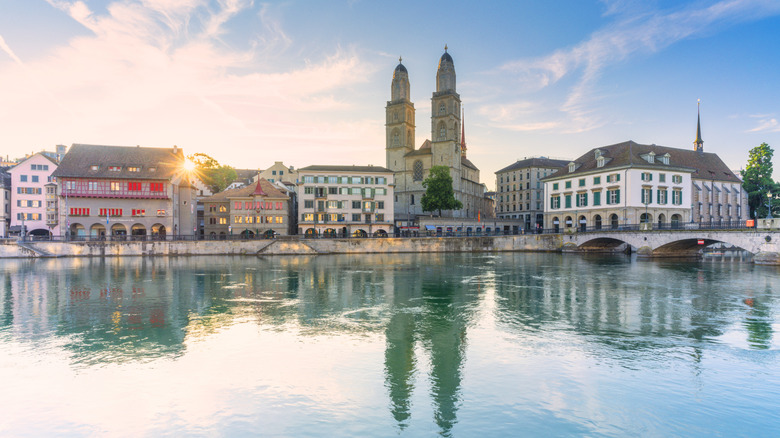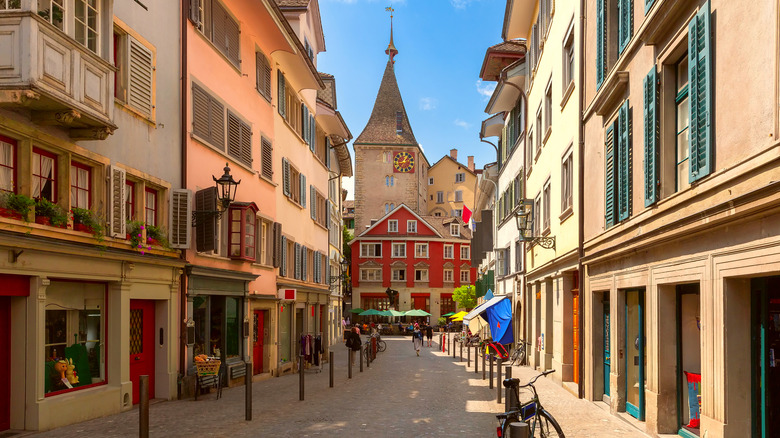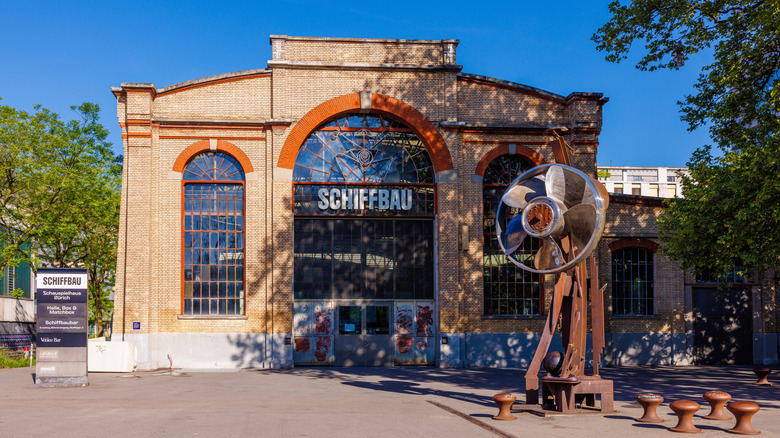One Of Europe's Prettiest Medieval Cities Is A Safe, Scenic Swiss Gem With Lakeside Charm, Clubs, And Dining
Small but mighty, Switzerland consistently scores high as one of the safest and most beautiful countries. U.S. News ranked it as the best country in the world in 2024, and it's home to numerous pretty and iconic destinations you can't skip on a Swiss trip. Alpine mountains, sparkling lakes, and fairytale-like villages are all reasons to visit Switzerland, but the cities showcase the country's blend of modern innovation, historic architecture, and rich culture. One of the most unmissable is Zurich, which was ranked as having the highest quality of life of any European city in a 2023 report by the European Commission. Enfolding on the north side of Lake Zurich, the city is known for its clean air, medieval Old Town, thriving arts, and nightlife.
The high quality of life in Zurich owes to a few factors, prominently safety, healthcare, and accessibility. The city's crime rate is incredibly low, and the University Hospital of Zürich was named the 10th best in the world in 2025 by Newsweek. For travelers, one thing you'll appreciate is how easy it is to get around. Zurich has a widespread transportation network made up of buses, trams, trains, boats, and even funicular railways, which can all be used with the same ticket. However, many choose to simply walk around. Zurich's compact layout makes it easy to see a lot even in just a weekend, and the Zurich Airport is just a 10-minute train ride from the city center.
Zurich's Old Town and lake views
At the center of the city, Zurich's Old Town (Altstadt) is a neighborhood of cobbled streets, guild houses, and medieval churches. Start at the Lindenhof, which serves as a public square and a perch to watch over the city and Lake Zurich as you ponder its history. Before it became Zurich, the city was an outpost of the Romans, who settled there in the first century B.C. The Romans built a castle on this very hill, and later, in the ninth century A.D., a palace was built by Charlemagne's grandson on Lindenhof. Its destruction in 1218 led to Zurich becoming an independent city.
Walk down from Lindenhof to Augustinergasse, one of the most beautiful streets in the city, with preserved medieval architecture. From there, it's a five-minute walk to the 13th-century Fraumünster Church. Take a moment to look inside — entry is free, and you can see stained glass windows made by Marc Chagall.
Cross the Münsterbrücke Bridge over the Limmat River, and you'll be at one of Zurich's other most iconic landmarks, the twin-towered Grossmünster Church. You can climb up the Karlsturm, one of its towers, for a wonderful view over the Old Town. From here, walk north 10 minutes along the Limmat Promenade to get to Niederdorf, a pedestrian zone full of shops and cafés tucked in between tiny alleyways. At night, it's a lively area with lots of bars and clubs. One is Widder Bar, housed in a hotel building with a history dating back 700 years.
Art and dining in Zurich's creative scene
Venture a bit north of the Old Town to see the Swiss National Museum, housed in a castle-like building with a dense, wide-ranging collection related to Swiss history and art. Just behind the museum is the Platzspitz, a triangular, riverside park that dates back to the 15th century. Take a 10-minute tram or a 20-minute walk northwest of here to Im Viadukt, a cool place to stop for lunch or shop for crafts. Eat at the Markthalle Restaurant for delicious, informal bites. The market hall is housed in a repurposed railway viaduct, now occupied by an array of food stalls and artisans. It's also located within one of Zurich's trendiest neighborhoods: Zurich West (or Kreis 5), a former industrial quarter turned into a hotbed of arts and restaurants.
Just across the street from Im Viadukt, the Löwenbräu Areal is a good example of how this neighborhood has made use of its industrial spaces for creative ends. As a former brewery complete with silos, the building now houses two of Zurich's best contemporary art museums: Kunsthalle Zürich and the Migros Museum for Contemporary Art. A 10-minute walk from there will take you to the Schiffbau, a former shipbuilding factory that's been repurposed as a performance venue (pro tip: on Mondays, all seats for the performances are offered at a reduced price). Connected to the building is LaSalle, a beautifully furnished restaurant serving Central European cuisine. It's a good idea to make a reservation if you want to dine here — not doing so is one common mistake to avoid on a trip to Switzerland.


